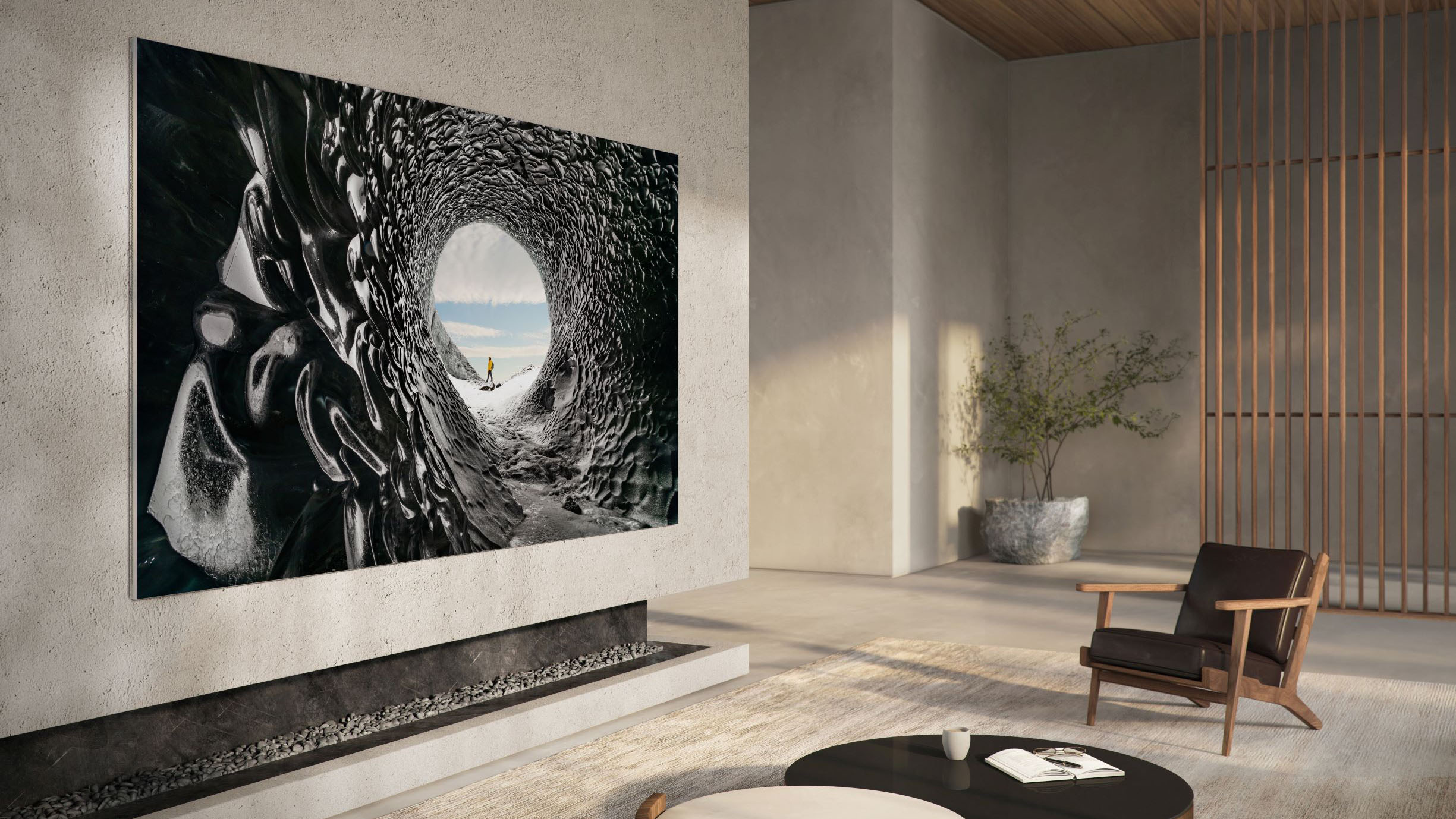Micro LED TV: the premium display tech explained

How often can you launch a new TV technology before it’s actually launched? Well, in the case of Micro LED, the answer would seem to be several times. Samsung first demonstrated its ‘The Wall’ Micro LED television in Las Vegas at CES in 2018, while Sony has been banging on about how excited it is by this technology for a similar length of time.
But it looks like 2021 could be the year Micro LED properly rears its head – or at least starts to get a bit of recognition away from the conference halls of CES. It’s probably not quite ready to wow the mainstream just yet – unless the mainstream has suddenly developed a taste for truly colossal, hilariously expensive televisions – but Micro LED is becoming more and more viable every day. And after all, every new TV technology, from plasma to OLED, starts life being a) of interest only to dedicated tech geeks and b) horribly pricey.
So here’s where we outline all the things that make Micro LED such a compelling idea, and why your next TV might well be packing Micro LED technology – as long as you’re not planning on buying a new television in the next six months, anyway.
Micro LED FAQ
- What is Micro LED? A method of getting brighter, higher-contrast images from a TV than is otherwise currently possible.
- What are its advantages? Increased brightness, long life-span, low power-consumption.
- Will I be able to see the difference? Most certainly. Even when screens get down to manageable sizes, the contrast ratio and brightness of a typical Micro LED TV is obvious.
- Are Micro LED TVs expensive? Right now, the answer is: yes, ruinously so. But that has been true of the infancy of every new TV technology...

What is Micro LED?
At the moment, LEDs are used to deliver backlighting to LCD screens – every current TV that isn’t an OLED uses this methodology of shining light through its pixels. And every TV that isn’t an OLED uses one LED to backlight dozens, maybe hundreds, of pixels at a time.
But Micro LED uses LEDs so small that they are able to function as individual pixels. And a pixel that is its own light-source doesn’t require any backlighting. This means screens are slimmer (due to the lack of backlighting) and images are better controlled across the board. Greater color fidelity, wider contrasts and increased brightness are suddenly all available.
Of course, self-emitting pixels are exactly what makes OLED TVs so compelling. But Micro LED doesn’t use any organic components, so the inevitable deterioration of performance that afflicts OLED screens won’t become an issue for Micro LED for hundreds of thousands of hours of use. Neither is the rare-but-dreaded ‘screen burn’ an issue with Micro LED.
And Micro LED has the potential to deliver far, far brighter images than OLED – and with HDR picture technology becoming ubiquitous, that’s a big advantage. The brightest OLED TVs peak at around 1,000 nits – but Samsung has already achieved 4,000 nits from its Micro LED screens, and is confident that 10,000 nits is achievable.
Couple this frankly astonishing level of brightness with the pure black tones that self-emissive screens are capable of, and Micro LED’s potential for enormous contrast ratios is obvious. All this brightness shouldn’t come with any kind of power-consumption cost, either; because there’s no color filter for the LEDs to shine through, they shouldn’t need as much oomph.
That brightness also promises big colour volumes – and because there’s no ‘cross-talk’ of colour or light even between neighbouring pixels, lighting ought to be utterly precise. Viewing angles ought to be at least as good as those of OLED screens, too.

How does Micro LED work?
Basically, Micro LED gets the job done thanks to its no-holds-barred implementation. Compared to regular LED/LCD or even OLED screens, Micro LED is a technological tour de force.
Of course, because LEDs are functioning as individual pixels here, there are an awful lot of them. A 4K resolution screen needs around 8.3m LEDs to deliver a 3840 x 2160 resolution image – or so you’d think. But in fact, because Micro LED needs a red LED, a blue LED and a green LED for each pixel, a 4K Micro LED screen is made up of roughly 25m individual LEDs.
So is it any wonder that Micro LED screens are currently somewhere between ‘really, really big’ and ‘absolutely huge’? Or that, as it stands, they’re prohibitively expensive?
Why does Micro LED matter?
Micro LED is important because it promises hitherto-unavailable brightness levels, contrast ratios and color volumes. It promises super-wide viewing angles. It’s able to serve up all the good picture quality stuff while consuming less power than OLED technology, and it has a lifespan way in excess of OLED too.
And because it’s possible to group thousands of LED pixels into ‘modules’ that can be taken apart and fitted together, Micro LED screens can (in theory, at least) be any size and any shape. No more being tied to a plain old 16:9 aspect ratio if you fancy a bit of modular Micro LED action.
Micro LED TVs: where can you get one?
Well, Samsung and Sony are both happy to part you from not-inconsiderable sums of money in exchange for a Micro LED TV, but first things first: have you got room for it?
So far, the smallest ‘domestic’ Micro LED Samsung has available is a whopping 110-inch display, which is the sort of screen-size more usually associated with projectors. The South Korean behemoth reckons it’ll soon be able to furnish you with a screen of ‘just’ 73 inches, but anything smaller than that is likely to be disproportionately expensive.
At least Samsung’s 110-inch monster arrives, like any other massive TV, as a single unit, though. The equivalent Sony Micro LED (which for some reason the company is calling ‘Crystal LED’) ships in 16 ‘modules’ and has to be assembled on site.

Should you buy a Micro LED TV?
Good heavens, no! Not unless you’ve money to burn as well as a great big wall to hang it on. For a 110-inch Samsung Micro LED you’re looking at something in the region of $150,000 (around £100,000 / AU$190,000) and Sony doesn’t even want to utter the price of its Micro LED screens out loud.
Obviously the processes involved in manufacturing Micro LED panels makes them horribly expensive, and the complexity of the process also means they’re not of as high a resolution as you might be expecting. Samsung’s 110-inch screen is 4K, while Sony’s is merely Full HD: if you wanted a Sony screen of 4K resolution and 16:9 aspect ratio, it would be 220in on the diagonal and would cost… well, we shudder to think.
As we said, all television technologies start off costing more than people are prepared to pay. But the advantages of Micro LED are so obvious, and so numerous, we wouldn’t bet against it becoming a mainstream technology before very much longer.
from TechRadar - All the latest technology news https://ift.tt/3pTfW7e

Post a Comment